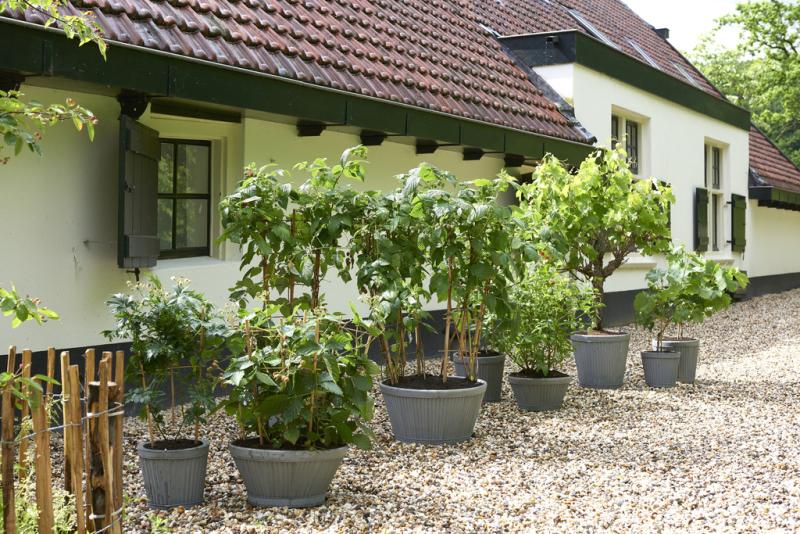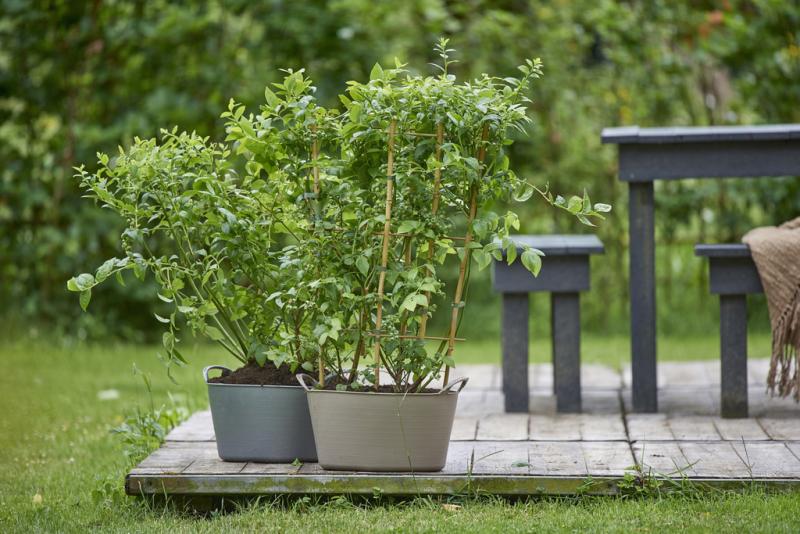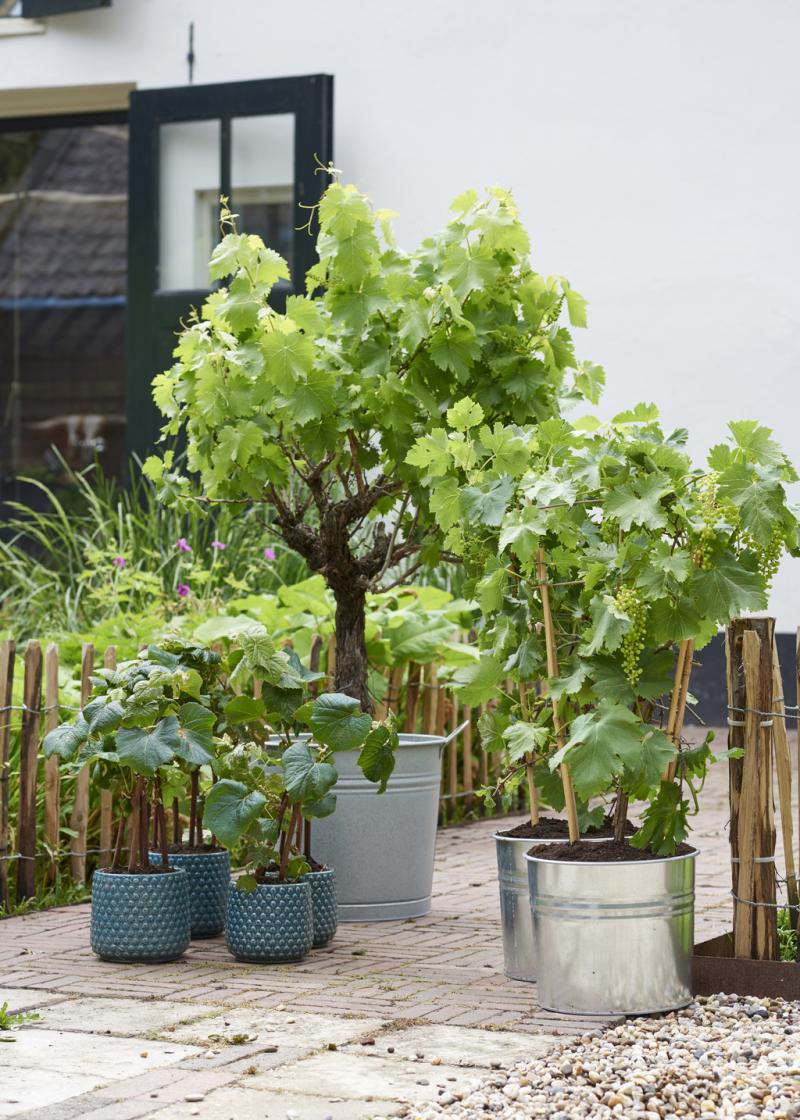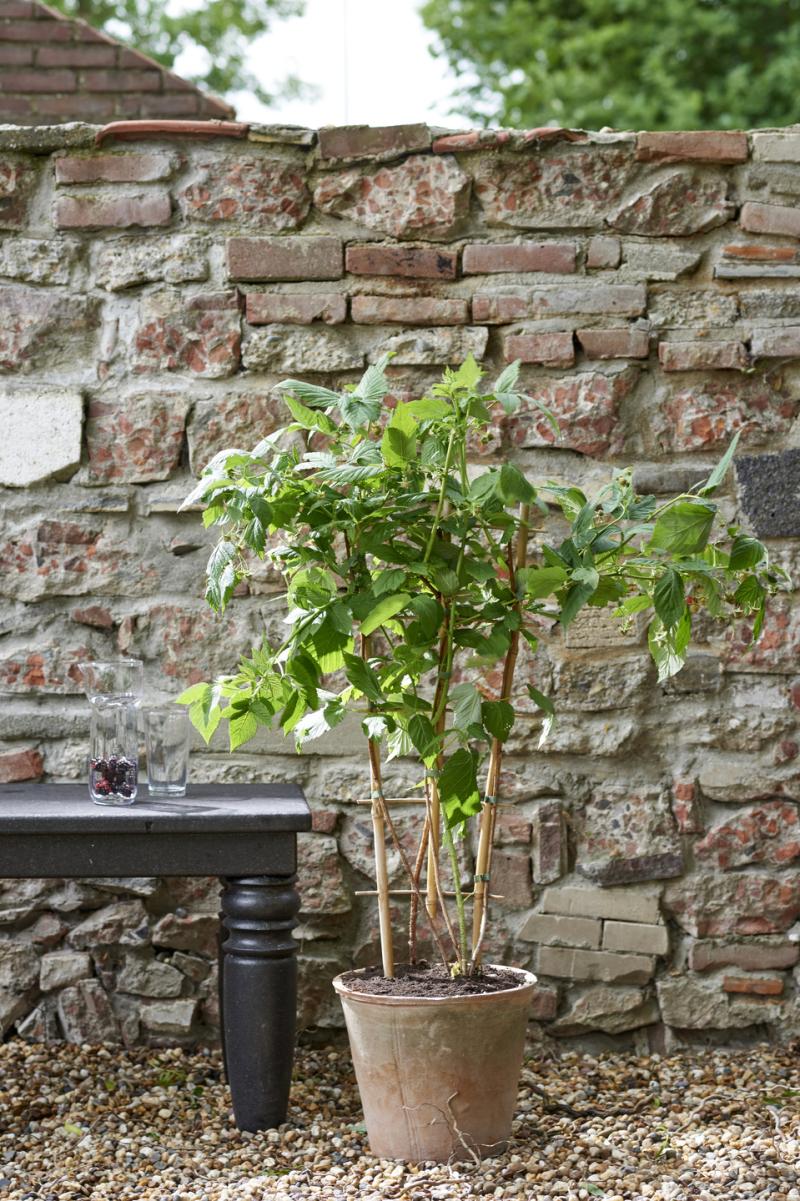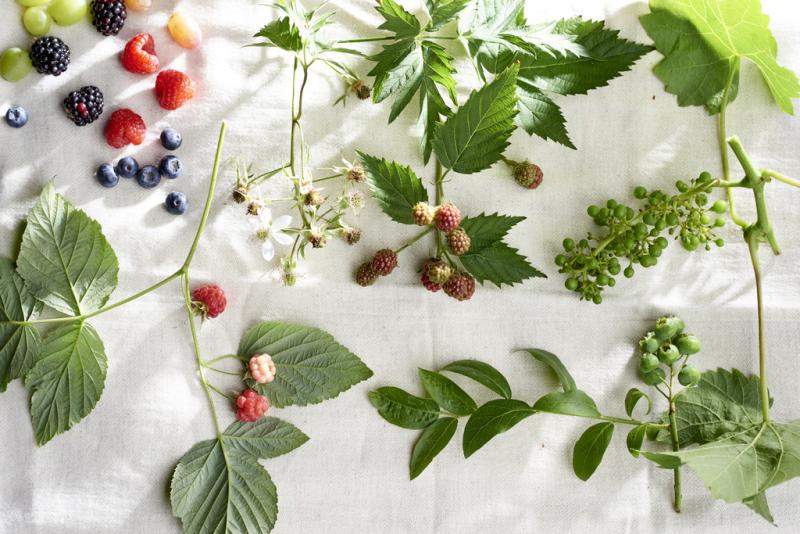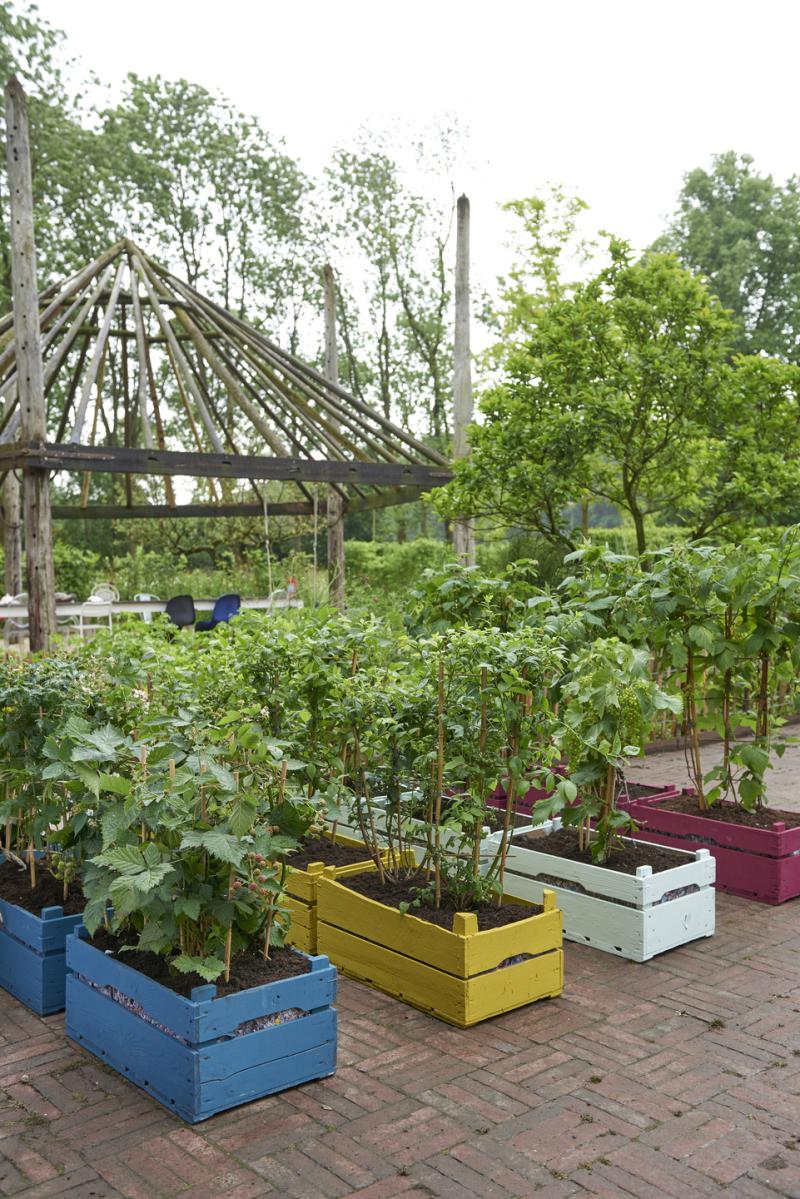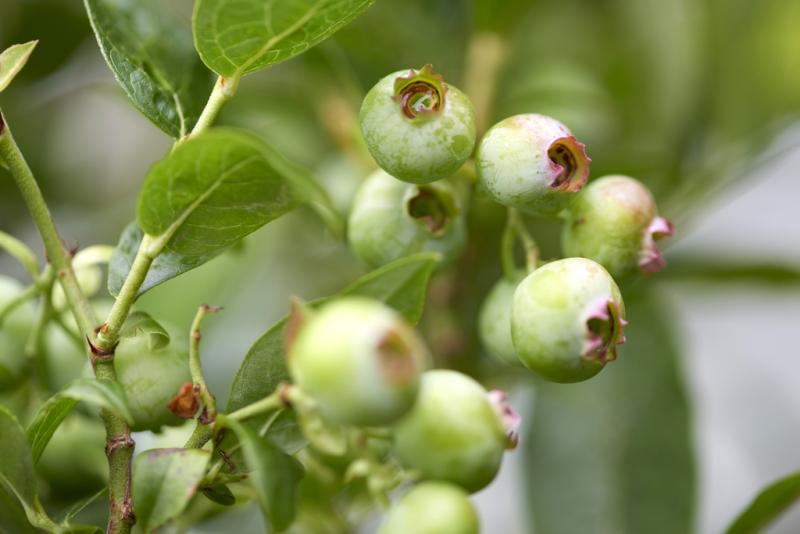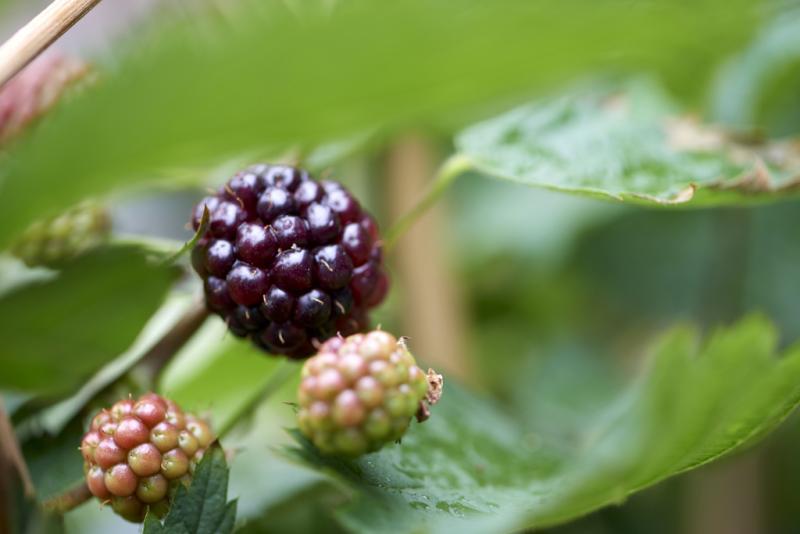Garden Plant of the Month for June 2018: Climbing fruit
It’s easy to create a pick-your-own garden with climbing fruit
A pick-your-own garden with climbing fruits like blackberries, raspberries, blueberries and grapes do not require much room. These plants grow upwards along a wall, fence, frame or pergola, and can even thrive on a balcony. They offer attractive foliage and blossom early in the summer.
During the summer the fruits develop, which can then be harvested late summer and autumn. So there’s always something going on with climbing fruit. Seeing fruit growing (and ultimately eating it) is a fun and educational experience for children and incorporates the growing trend of wanting to know where your food comes from. And what you don’t eat yourself will delight the birds in autumn.
Range
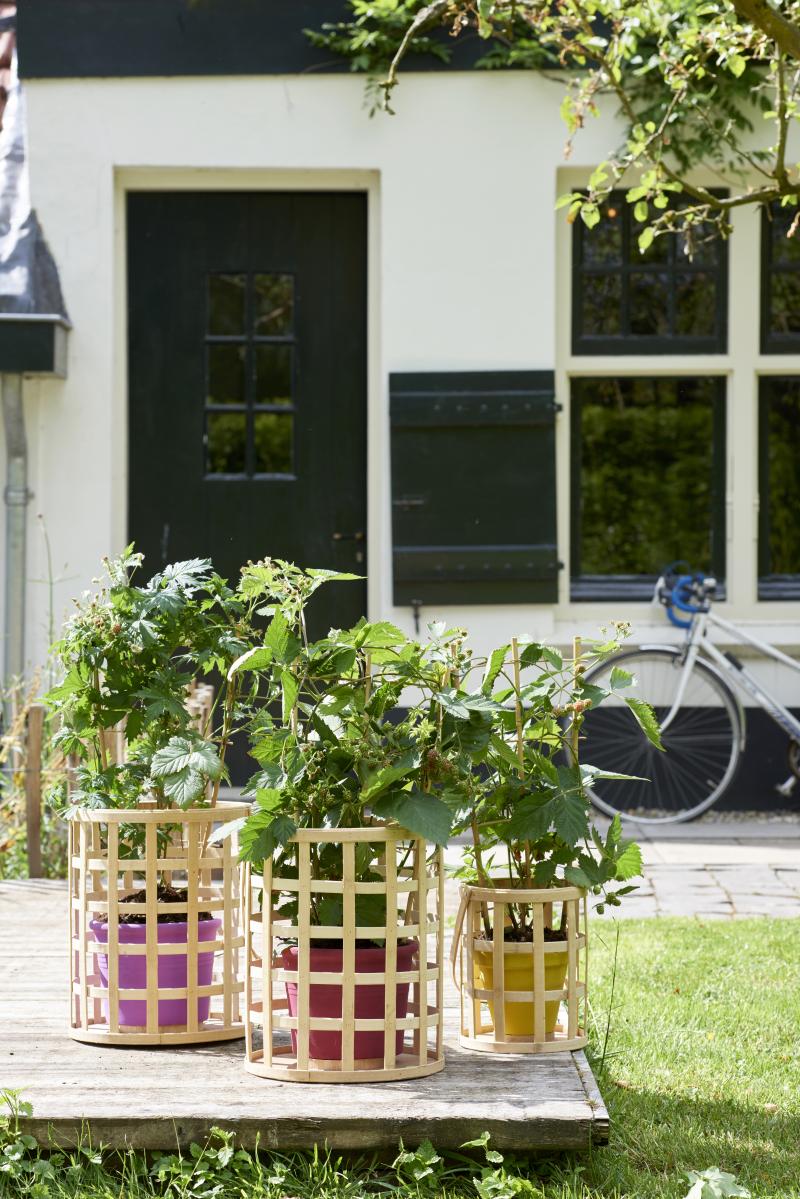
Climbing fruit trivia
- Bramble - the other name for the blackberry - is a bastardisation of the old Germanic word ‘bram-bezi’, which became ‘brombeere’ in German, ‘braambes in Dutch’, ‘bramble’ in English and ‘(f)ramboise’ in French. The blackberry is really the European ancestral berry.
- The blueberry is often confused with the bilberry (Vaccinium myrtillus), but is a bit larger, doesn’t stain and has foliage in the autumn that changes to a fabulous fiery red.
- The fresh, juicy raspberry is also known as the ‘caviar of fruit’ and is viewed as one of the tastiest berries internationally.
- From eastern China to southern Europe, the grape has had a special status as the basis for wine for some 9000 years. Breeding (and a bit of climate change) mean that the plant can now also thrive in cooler regions such as Britain, the Netherlands and Scandinavia.
Origin
Many climbing fruits are members of the rose family. The blackberry grows throughout Europe, but also in the high mountains of South America. The raspberry is another European classic, and has been spreading from Italy and Greece since the 16th century. Blueberries are native to woodland areas in the eastern United States, and have only been growing in Europe since the start of the 20th century. Grapes spread from the Middle East.
What to look for when buying
- Climbing fruits are offered in various pot sizes and stages of growth. By June the plants should be fairly fully grown, have plenty of leaves, and be bearing blossom or even fruit.
- Check the ratio between pot size and plant, the length of the supports and a good spread of leaves, flowers and berries.
- Check for caterpillars, snails, aphids or other pests such as mildew or Botrytis.
Care tips for customers
- Climbing fruits can be placed in containers, pots or beds, and prefer a sunny spot where it does not get darker than partial shade. Sunlight is required to ripen the fruit.
- Blackberries, raspberries and blueberries like nutrient-rich, slightly acidic soil. Grapes prefer a chalky soil.
- Do not allow the soil to dry out. The plants use a lot of water for growing the berries.
- Provide support for the plant to climb up, such as a rack, frame or pergola.
- Give plant food once a fortnight during the growing season, matched to the fruit in question.
- Most fruit climbers are self-pollinating, so there’s nothing more you need to do to enjoy fruit.
- Prune in late winter or early spring.
Downloadable content and POS material:
- Poster Climbing Fruit UK
- Banner Climbing Fruit UK
Garden Plant of the Month:
Climbing fruit are the Garden Plants for June 2018. The ‘Garden Plant of the Month’ is an initiative from the Flower Council of Holland. Every month the Flower Council works with representatives of the floriculture sector to choose a plant with an amazing look or unusual characteristics to put in the spotlight. Sometimes it will be a green star that’s highlighted, and sometimes an undiscovered treasure that deserves to be better known and merits a place in the garden, on the patio or on the balcony. Because everyone is happier with more plants.
For more information:
Facebook: Thejoyofplants
Twitter: @Thejoyofplants
Thejoyofplants.co.uk
Thejoyofplants.co.uk is an initiative from the Flower Council of Holland to help consumers discover that you feel better with plants around you.

